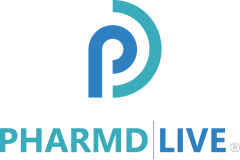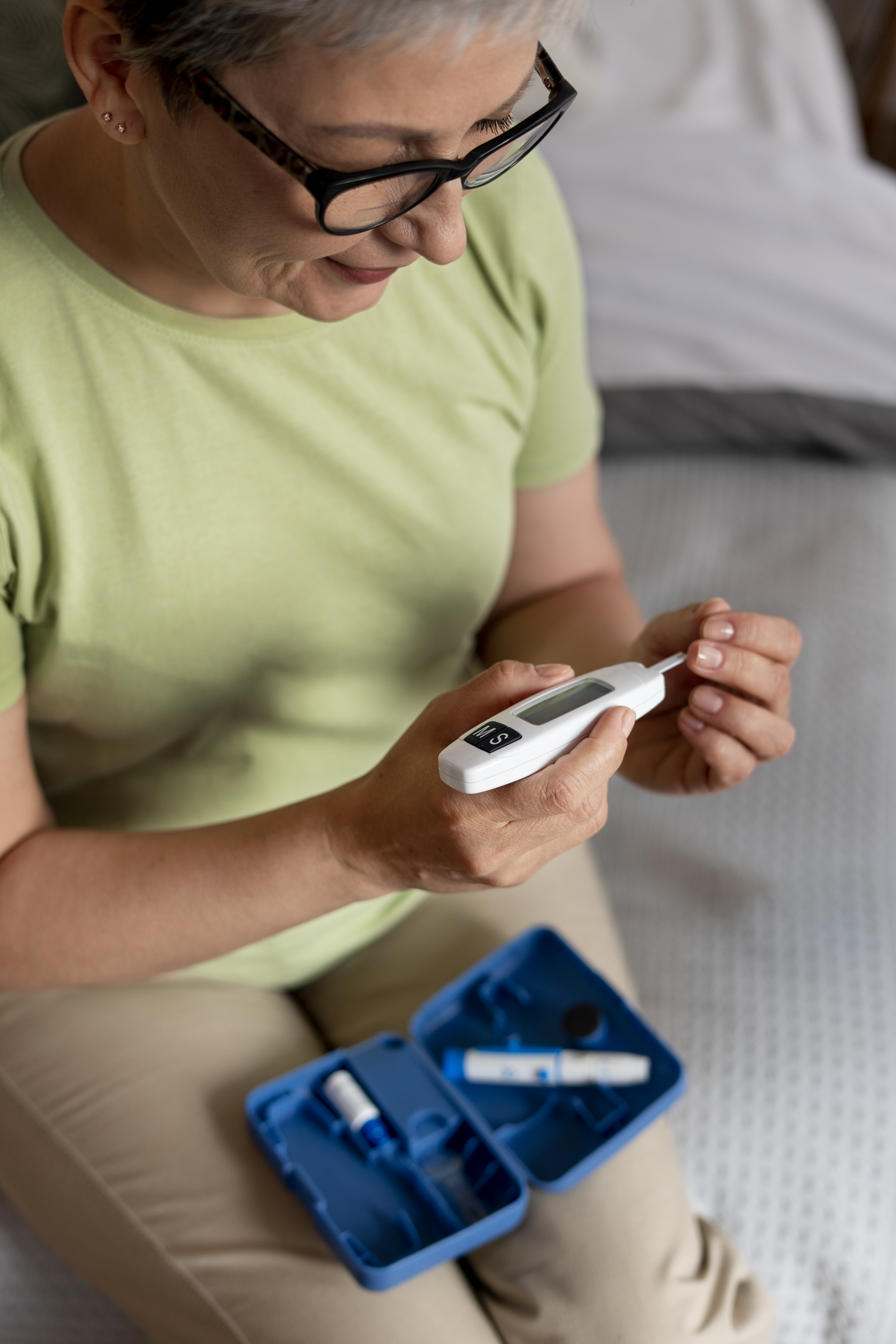By: Hannah Grice, PharmD
In the United States, 34.2 million people have diabetes,1 the majority of them have type II diabetes. Type II diabetes is a chronic disease characterized by elevated blood glucose. Management of type II diabetes is multifactorial: diet, exercise, and pharmacotherapy are all part of the treatment.
Recently, a new medication called tirzepatide has had promising results during clinical trials. This article will focus on the action mechanism of tirzepatide and summarize the outcomes of the clinical trials. Tirzepatide is not yet approved for use by the Food and Drug Administration.
Tirzepatide is a glucagon-like peptide 1 (GLP-1) and glucose-dependent insulinotropic polypeptide (GIP) combination therapy.2 GLP-1 therapies are well-established treatments to lower glucose by increasing glucose-dependent insulin secretion and slowing gastric emptying.3 In contrast, GIP was thought to have no use as a type II diabetes drug because it lacks insulinotropic effects.2 However, new evidence suggests that it has synergistic effects when administered with a GLP-1 and can increase insulin secretion and glucagon secretion. These results led to developing a once-weekly subcutaneous injection therapy of GIP/GLP-1, also known as ‘twincretin’.
The phase I proof of concept trial was a randomized, placebo-controlled, double-blind study. It comprised three parts: single-ascending dose (SAD) and 4-week multiple-ascending dose (MAD) protocols in healthy subjects, followed by a 4-week multiple-dose Phase 1b proof-of-concept (POC) in patients with T2DM. There were 146 subjects randomly assigned either dulaglutide, LY3298176 (tirzepatide), or placebo. The results showed that the healthy subjects treated in the MAD study had significant reductions in fasting glucose with tirzepatide 4.5 mg compared to placebo on Day 29.
Between tirzepatide and placebo, fasting insulin did not differ. In patients with T2DM treated with tirzepatide in the Phase 1 b POC study, HbA1c decreased in a dose-dependent manner from baseline compared to placebo. Significant differences were seen in the 5/5/10/10 mg and 5/5/10/15 mg titration groups on Day 29 (LSM differences [95% CI]: −0.84% [−1.17, −0.52] and −0.58% [−0.92, −0.24], respectively). Fasting glucose and fasting serum insulin were significantly decreased in subjects treated with the 5/5/10/10 mg and 5/5/10/15 mg titration doses compared to placebo on Day 23.
As far as weight loss is concerned, all treatment groups had statistically significant weight loss compared to placebo except for the 0.5 mg group. From a safety perspective, no deaths occurred. The most common adverse effects associated with the therapy were gastrointestinal adverse effects, such as decreased appetite, vomiting, diarrhea, and abdominal discomfort. There were no cases of severe hypoglycemia.
The SURPASS trial was a randomized, parallel-assigned, interventional, double-masked, phase-III clinical trial.4 Participants were placed in SURPASS-1, SURPASS-2, SURPASS-3, SURPASS-4, and SURPASS-5. The start date was May 2017 and the completion date was March 31, 2019.
The trial’s focus was to establish the safety and efficacy of tirzepatide. The primary outcome of the trial was changed from baseline in hemoglobin A1c (HbA1c) at week 52. There were multiple secondary outcomes, including but not limited to:
- percentage of participants with HbA1c of <7.0%,
- change from baseline in Fasting Serum Glucose,
- change from baseline in body weight, and
- ate of total hypoglycemia.
The once-weekly dosing tirzepatide scheme was for doses of 5 mg, 10 mg and 15 mg.2 A dose-escalation algorithm, created from the results of the phase II trial, was used in SURPASS. The starting dose was at 2.5 mg weekly for the initial 4 weeks, then the dose increment of 2.5 mg every 4 weeks until the maintenance dose of 5 mg, 10 mg, or 15 mg is reached.
Therefore, it takes:
- 4 weeks to reach the 5 mg dose,
- 12 weeks for the 10 mg dose, and
- 20 weeks for the 15 mg dose.
The results of the SURPASS trials are briefly summarized below5:
| SURPASS-1 included patients with drug-naive type II diabetes vs. placebo. The trial observed that up to 92% of participants taking tirzepatide achieved HbA1c below 7.0% (53 mmol/mol), compared with 19% of those taking a placebo. Additionally, 52% versus 1% achieved levels below 5.7% (39 mmol/mol). |
| SURPASS-2 included patients taking metformin monotherapy and tirzepatide versus patients on semaglutide. The patients in the tirzepatide group had significant A1c reductions of 2.3 % vs 1.86 % in the semaglutide group. Additionally, tirzepatide had more significant weight reductions. |
| SURPASS-3 included patients taking metformin with/without an SGLT2 inhibitor and tirzepatide versus insulin degludec. The results observed that the patients on the 15 mg tirzepatide had significant A1c reductions of 2.37% versus 1.34%. The tirzepatide groups lost an average of 7.5, 10.7, and 12.9 kg, compared with the insulin group who lost an average of 2.3 kg. Furthermore, the tirzepatide group had significantly fewer events of hypoglycemia. |
| SURPASS-4 included patients at increased cardiovascular risk taking metformin with/without a sulfonylurea or SGLT2 inhibitor and tirzepatide versus insulin glargine. All three dosing groups had significantly greater A1c reduction versus insulin glargine. For instance, the 15 mg group had an A1c reduction of 2.58% (28.2 mmol/mol) compared with 1.44% (15.7 mmol/mol). Likewise, they had significantly more weight loss and less hypoglycemia. The trial enrollment included 87% patients who had a previous cardiovascular event. During the 104-week follow-up, the major adverse cardiovascular event rates were similar for those taking tirzepatide and glargine (5% vs. 6%). |
| SURPASS-5 included patients on insulin glargine with tirzepatide versus placebo. Treatment with insulin glargine plus tirzepatide resulted in an average 2.59% reduction in HbA1c versus 0.93% in the glargine and placebo group. Additionally, the tirzepatide group lost an average of 10.9 kg versus the placebo group who gained 1.7 kg. |
Furthermore, there are many ongoing and upcoming associated trials, such as SURPASS-5, that include people who take metformin with/without a sulfonylurea and tirzepatide versus insulin glargine. The estimated study completion is March 2022.
SURPASS-CVOT includes people with type II diabetes, confirmed atherosclerotic cardiovascular disease, overweight, and tirzepatide versus dulaglutide. The estimated completion date for SURPASS-CVOT is October 2024. In addition, SURMOUNT-1 includes people with type II diabetes plus obesity or BMI 27 kg/m2 and related comorbidities and tirzepatide versus placebo. It has an estimated completion date of May 2024.
To summarize, tirzepatide is a GLP-1/GIP therapy for type II diabetes. The trials have observed that tirzepatide significantly reduces A1c and weight versus other diabetes pharmacotherapy choices. Although the results observed that patients taking tirzepatide have similar cardiovascular outcomes as those taking insulin alone, more studies need to be conducted to demonstrate the cardiovascular implications of the drug. Furthermore, patients frequently had GI adverse effects but were less likely to have hypoglycemic events. Tirzepatide is not yet approved for use, however, the results from the trials are very promising and tirzepatide could be a very effective therapy for those diagnosed with type II diabetes.
If you have Medicare patients with diabetes and other chronic conditions, PharmD Live can develop a customized program to coordinate care and capture data to improve patient quality outcomes. Remote Patient Monitoring, Medication Therapy Management, and Chronic Care Management can work seamlessly for you through our proprietary AI platform. Our clinical pharmacists, as partners in your quality improvement program, are available to patients 24/7. They answer questions, monitor drug interactions, flag gaps in treatment, and watch for potential adverse drug events.
About the author:

Hannah Grice, PharmD, graduated from Texas Tech University Health Sciences Center School of Pharmacy in 2021 and has been with PharmD Live since May of 2020. Dr. Grice’s interests include geriatrics, specialty pharmacy, and collaborative disease state management. She lives in Fort Worth, TX, with her husband and basset hound. In her free time, she enjoys playing tennis and hosting game nights with friends and family.
References:
- Diabetes basics. Centers for Disease Control and Prevention. https://www.cdc.gov/diabetes/basics/index.html. Published June 15, 2021. Accessed October 30, 2021.
- Min T, Bain SC. The Role of Tirzepatide, Dual GIP and GLP-1 Receptor Agonist, in the Management of Type 2 Diabetes: The SURPASS Clinical Trials. Diabetes Ther. 2021;12(1):143-157. doi:10.1007/s13300-020-00981-0
- Dulaglutide. In: Lexi-Drugs [database online]. Hudson, Ohio: Wolters Kluwer Health. Updated periodically. Accessed October 30, 2021.
- A study of Tirzepatide (LY3298176) compared to Dulaglutide in participants with type 2 diabetes – full text view. A Study of Tirzepatide (LY3298176) Compared to Dulaglutide in Participants With Type 2 Diabetes – Full Text View – ClinicalTrials.gov. https://clinicaltrials.gov/ct2/show/NCT03861052. Accessed October 30, 2021.
- https://diabetes.medicinematters.com/tirzepatide/type-2-diabetes/a-quick-guide-to-the-surpass-and-surmount-trials/18478154








